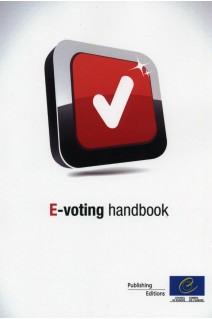



Introduction
Chapter 1 - Different types of electronic tool
Chapter 2 - Points to consider before introducing e-voting
2.1. Principal points to consider
2.1.1. Voter verified paper audit trail
2.1.2. End-to-end verification
2.1.3. Family voting
2.2. General points to consider
2.2.1. Confidence
2.2.2. Public debate
2.2.3. Accessibility
2.3. Technical points to consider
2.3.1. Open-source or proprietary software
2.3.2. Identification and authentication of the voter
2.3.3. Removing the link between vote and voter
2.3.4. Design of the electronic ballot paper
2.3.5. Confirmation of the vote
2.3.6. Voting period
Chapter 3 - Pre-electoral period (preparations)
3.1. Legal framework
3.1.1. Constitution
3.1.2. Legislation
3.1.3. Electoral systems and electoral districts
3.1.4. Electoral management body
3.1.5. Codes of conduct
3.2. Planning and implementation
3.2.1. Budgeting, funding and financing
3.2.2. Election calendar
3.2.3. Recruitment
3.2.4. Procurement
3.2.5. Logistics
3.2.6. Security
3.3.Training and education
3.3.1. Operational training for election officials
3.3.2. Civic education
3.3.3. Voter information and training
3.4. Registration and nominations
3.4.1. Voter registration
3.4.2. Observer accreditation
3.4.3. Parties and candidates
3.5. Election campaign
Chapter 4 - Electoral period (operations)
4.1. Voting operations and election day
4.1.1. Pre-voting period
4.1.2. Voting period
4.1.3. Post-voting period
4.1.4. Special and external voting
4.2. Vote counting
4.3. Tabulation of results
4.3.1. Tabulation of results
4.3.2. Complaints and appeals
4.3.3. Official results
Chapter 5 - Post-electoral period (strategies)
5.1. Post-electoral period
5.1.1. Audits and evaluation
5.1.2. Archiving and research
5.1.3. Voter register update
5.1.4. Legal reform
5.1.5. Institutional strengthening and professional development
Appendix I - Glossary of terms
Appendix II-Bibliography
Télécharger un extrait (1000)







Attention, en vertu de nos conditions générales de vente, l'achat des PDF/epub est réservé aux particuliers.
